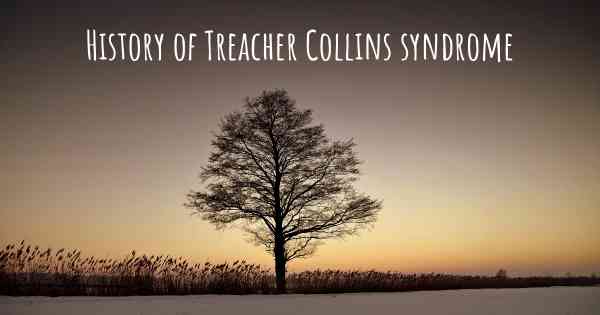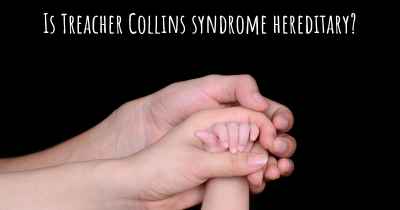What is the history of Treacher Collins syndrome?
When was Treacher Collins syndrome discovered? What is the story of this discovery? Was it coincidence or not?

Treacher Collins syndrome is a rare genetic disorder that affects the development of facial bones and tissues. It is named after the English surgeon Edward Treacher Collins, who first described the condition in 1900. This syndrome is also known as mandibulofacial dysostosis or Franceschetti-Zwahlen-Klein syndrome.
Causes:
Treacher Collins syndrome is caused by mutations in the TCOF1, POLR1C, or POLR1D genes. These genes provide instructions for making proteins that are involved in the early development of facial bones and tissues. The mutations in these genes disrupt the normal development of these structures, leading to the characteristic features of the syndrome.
Symptoms:
The most noticeable symptoms of Treacher Collins syndrome are facial abnormalities. These include downward-slanting eyes, underdeveloped cheekbones and jaw, small chin, and malformed ears. The severity of these symptoms can vary widely among affected individuals. Some individuals may also have cleft palate, hearing loss, and breathing difficulties due to the narrow airways.
History:
The history of Treacher Collins syndrome dates back to the late 19th century when Edward Treacher Collins, a British surgeon, first observed and documented the condition. In 1900, he published a paper describing a series of cases with similar facial abnormalities. He noted that the condition seemed to be inherited and affected multiple generations within families.
Over the years, further research and clinical observations expanded our understanding of the syndrome. In the 1940s, Dr. Franceschetti and Dr. Zwahlen independently described additional cases and contributed to the knowledge of the condition. Their work helped establish the syndrome as a distinct entity within the field of medical genetics.
Genetic Discoveries:
In the late 1990s, advancements in genetic research led to the identification of the specific genes associated with Treacher Collins syndrome. Scientists discovered that mutations in the TCOF1 gene were responsible for the majority of cases. This gene provides instructions for making a protein called treacle, which plays a crucial role in the development of facial bones and tissues.
Subsequent studies identified mutations in the POLR1C and POLR1D genes as additional causes of the syndrome. These genes are involved in the production of RNA polymerase, an enzyme essential for the transcription of genetic information.
Current Understanding and Treatment:
Today, the understanding of Treacher Collins syndrome has greatly improved, thanks to advancements in genetics and medical research. Genetic testing can now confirm the diagnosis of the syndrome by identifying mutations in the associated genes.
While there is no cure for Treacher Collins syndrome, treatment focuses on managing the symptoms and improving quality of life. This may involve surgical interventions to correct facial abnormalities, such as reconstructive surgery for the jaw and cheekbones, and ear reconstruction. Speech therapy and hearing aids can help individuals with speech and hearing difficulties.
Support and Awareness:
Support groups and organizations have been established to provide resources, information, and emotional support to individuals and families affected by Treacher Collins syndrome. These groups play a crucial role in raising awareness about the condition and advocating for research and improved treatments.
In conclusion, Treacher Collins syndrome is a rare genetic disorder that affects the development of facial bones and tissues. It was first described by Edward Treacher Collins in 1900, and subsequent research has identified the specific genes involved. While there is no cure, advancements in medical understanding and treatment options have improved the lives of individuals with Treacher Collins syndrome.








